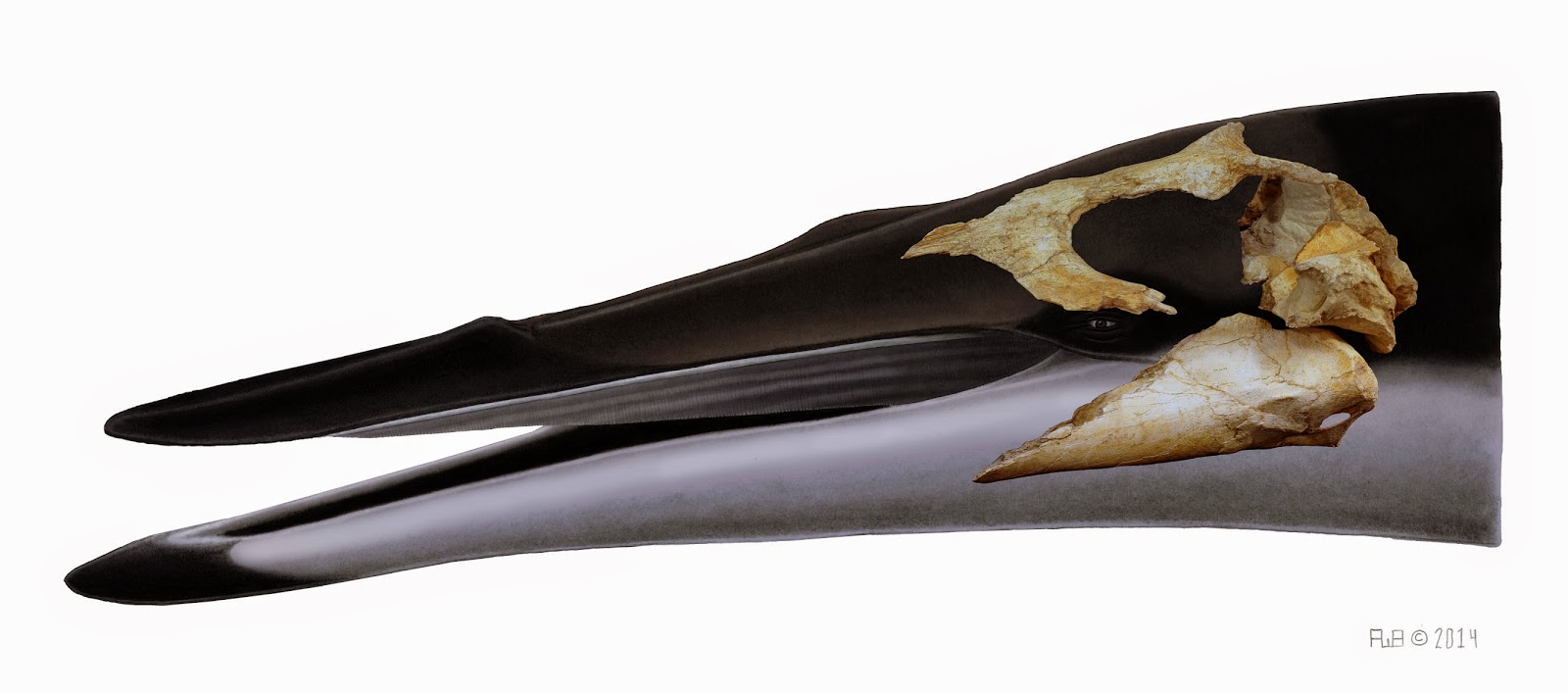 |
| Tohoraata raekohao Boessenecker & Fordyce, 2014 |
Abstract
The published Oligocene record of mysticetes (baleen whales) is dominated by toothed mysticetes in addition to the Eomysticetidae, the earliest known chaeomysticetes known only from the Oligocene. Formally recognized eomysticetids include examples from the Oligocene of South Carolina, USA (Eomysticetus), and Japan (Yamatocetus). A new fossil from the upper Oligocene Otekaike Limestone including a partial skull, periotic, tympanic bulla, mandible and some postcrania is here described as Tohoraata raekohao gen. et sp. nov. Tohoraata confirms the presence of an eomysticetid in New Zealand. Tohoraata raekohao is characterized by delicate frontal with numerous supraorbital foramina and sulci, relatively long exposure of the frontal and parietal along a transversely narrow intertemporal region, greatly enlarged temporal fossa, massive and anteriorly directed zygomatic process lacking a supramastoid crest, and a periotic with superior process reduced to a low ridge with anterior and posterior apices. Cranial and postcranial fusion of elements, development of muscle attachments and osteohistology demonstrate that the T. raekohao holotype is an adult or possible subadult. Features of the tympanic bulla including a relatively wide bulla with a medial lobe that is transversely much wider than the lateral lobe, and a slightly posterolaterally facing exoccipital, permit referral of the fragmentary ‘Mauicetus’ waitakiensis of Marples into the genus Tohoraata, resulting in Tohoraata waitakiensis comb. nov. Description of T. raekohao and resolution of the relationships of the hitherto problematic Tohoraata waitakiensis indicates that several eomysticetids were present in the Southern Ocean during the Late Oligocene.
Keywords: Eomysticetidae; Mysticeti; Cetacea; Oligocene; New Zealand
Robert W. Boessenecker and R. Ewan Fordyce. 2014. A New Eomysticetid (Mammalia: Cetacea) from the Late Oligocene of New Zealand and a re-evaluation of ‘Mauicetus’ waitakiensis. Papers in Palaeontology. in press. doi: 10.1002/spp2.1005
The scientists, from the University of Otago, have named the new genus Tohoraata, which translates as ‘Dawn Whale’ in Maori.

